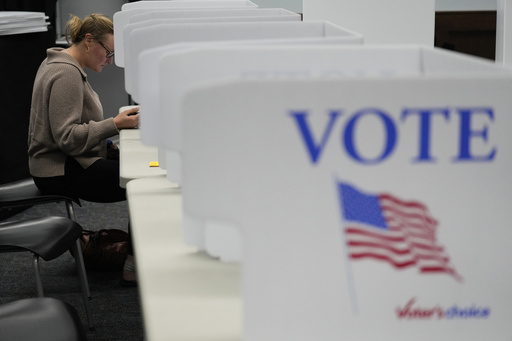
WASHINGTON — In a notable shift from the previous election cycle, Republican voters in North Carolina turned out in higher numbers, while Democratic participation saw a decline. This combination of factors ultimately propelled Donald Trump to victory over Vice President Kamala Harris, marking the third time he has secured a win in this pivotal state.
Trump has established a strong presence in North Carolina, although his victory over Joe Biden in the 2020 election was by a narrow margin of just over 1%. In this most recent election, Trump maintained a 2.8 percentage point advantage when the results were declared at 11:18 p.m. ET, as it became evident that remaining votes from Democratic-leaning regions would not suffice for Harris to close the gap.
To comprehend the dynamics influencing Harris’s performance compared to Biden’s, it is essential to examine the counties of Nash and Hanover. Hillary Clinton lost Nash County in the 2016 election, but Joe Biden successfully flipped it in the subsequent election. However, in a reversal of fortunes, Trump regained control of the county this year, winning it by a margin of 2 percentage points. Conversely, Harris found some success in Hanover County, which encompasses Wilmington, yet her performance still lagged behind Biden’s results from 2020.
In this contest, the candidates included President Kamala Harris (D), Donald Trump (R), Chase Oliver from the Libertarian Party, Jill Stein representing the Green Party, Randall Terry from the Constitution Party, and Cornel West from the Justice For All Party.
Trump was declared the winner as the polling closed at 7:30 p.m. ET. This election marked his closest victory in North Carolina during the 2020 presidential race, a contest where he barely edged out Biden while failing to secure over 50% of the total vote. The election four years later unfolded with even more intricate circumstances.
North Carolina has only backed Democratic presidential candidates twice since 1968, with the last occasion being in 2008 when Barack Obama won the state. Currently, North Carolina is experiencing rapid growth due to an influx of people relocating from other states, many of whom are college-educated professionals— a demographic increasingly inclined toward Democratic ideals.
Additionally, the lingering effects of Hurricane Helene, which heavily impacted the more conservative western regions of the state, presented Democrats with a potentially favorable opportunity to secure a win. The devastation from the hurricane could have stirred political sentiments in a way that benefited Democrat candidates.
The reasoning behind the race call was based on Trump’s improved performance in North Carolina relative to his prior victory. Harris did not manage to mobilize as much support as Biden had four years earlier. By the time the results came in, she would have needed to capture nearly 60% of the remaining votes, but there were not enough ballots left in Democratic strongholds to fulfill that requirement.
